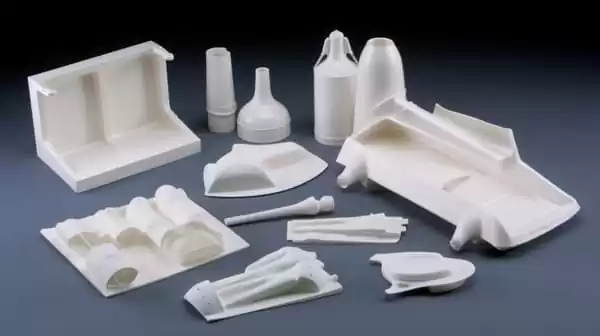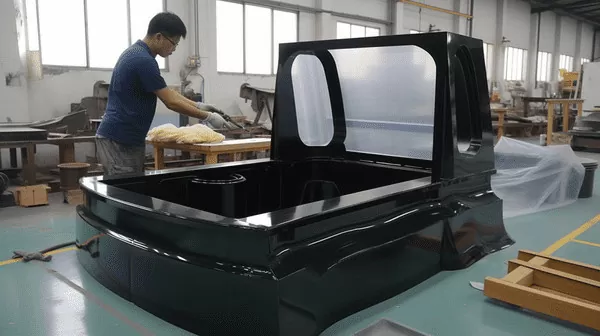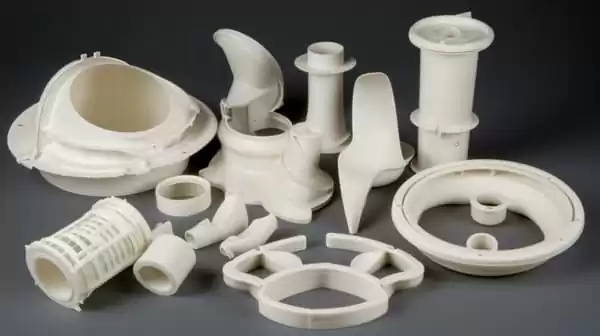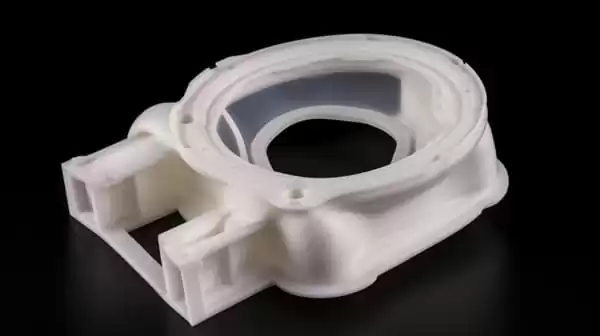Introduction
Vacuum forming is a widely used manufacturing process that involves heating shaping thermoplastic sheets into various products. It is a versatile technique that offers many advantages, including cost-effectiveness and the ability to create complex shapes. One crucial aspect to consider in vacuum forming is the maximum thickness achievable for the formed parts. Understanding this maximum thickness is essential for ensuring the success of the manufacturing process and meeting design requirements. In this article, we will explore the significance of understanding the maximum thickness achievable in vacuum forming and how it impacts the production of high-quality parts. By delving into this topic, manufacturers can make informed decisions and optimize their vacuum forming processes.

II. Understanding Vacuum Forming process
Vacuum forming is an efficient manufacturing technique used to craft various products out of thermoplastic sheets. The process entails several key steps that work together to shape material into its desired form - let's take a closer look at each of them:
Heating:
To start the forming process, the thermoplastic sheet used typically consists of PVC, ABS or other thermoplastic materials must first be heated until its softening point, making it more flexible for manipulation during the forming stage.
Molding:
Once a thermoplastic sheet has reached the required temperature, it must be carefully placed over a mold. A mold is a pre-designed structure which determines the final shape of a part being formed; to cover its entirety completely.

Vacuum Pressure:
Once the sheet is in position, a vacuum is applied using a vacuum pump that draws out air between it and the mold surface, creating an pressure difference that draws it tight against it and conforms it to its desired shape.

Cooling:
Once vacuum pressure has successfully formed the sheet to its mold, it must be cooled in order to solidify its thermoplastic material and retain its desired form. Cooling can occur naturally or with help from cooling fans or other cooling mechanisms.
Finishing:
Once cooled and solidified, the formed part is removed from its injection molding, for further finishing. This may involve trimming off excess material, smoothing edges or adding any necessary details or surface treatments.
The vacuum forming process combines several steps to produce high-quality parts with precise shapes and dimensions, with each step playing an essential part in reaching your final goal. By understanding its intricacies, manufacturers can optimize their production processes to guarantee consistent and accurate results.
III. Factors Affecting Maximum Thickness
Several factors influence the maximum thickness achievable in vacuum forming. Understanding these factors is essential for optimizing the forming process and achieving the desired results. Let's explore the key factors that impact the maximum thickness in vacuum forming:
1.Material Characteristics:
Different thermoplastic materials have distinct properties that affect their formability. Factors such as melt flow properties light weight, stiffness, elongation capabilities, and heat resistance vary among materials. Materials with higher elongation properties and better heat resistance can accommodate thicker sheets during the forming process.
2.Mold Design and Complexity Considerations:
The design and complexity of the mold used in vacuum forming play a crucial role in determining the maximum thickness achievable. Complex molds with intricate shapes and deep draws require the plastic sheet to stretch further, which may limit the maximum achievable thickness. On the other hand, simpler molds with shallow contours allow for thicker parts to be formed successfully.

3.Importance of Proper Heating and Cooling Processes:
The heating and cooling processes in vacuum forming are critical for achieving optimal results. Proper heating ensures that the thermoplastic sheet reaches the appropriate temperature for it to become pliable. It also helps in achieving uniform heating across the sheet, reducing the risk of thinning or tearing. Controlled cooling is essential for maintaining the shape and integrity of the formed part. Inadequate heating or rapid cooling can lead to structural issues and limitations in thickness.
4.The Role of Vacuum Pressure:
Vacuum pressure plays a vital role in determining the maximum thickness achievable in vacuum forming. Higher vacuum pressures facilitate better material conformity, allowing for thicker sheets to be formed successfully. However, excessively high pressures can cause excessive stretching or distortion, compromising the accuracy and integrity of the formed part.
By understanding the impact of material characteristics, mold design, heating and cooling processes, and vacuum pressure, manufacturers can optimize their vacuum forming processes and achieve the maximum thickness desired for their specific applications. Balancing these factors ensures the production of high-quality vacuum-formed parts with consistent thickness and structural integrity.

IV. Maximum Thickness in Vacuum Forming and Thermoforming
In vacuum forming and thermoforming, the achievable maximum thickness of the formed parts generally falls within a specific range. Understanding this range is essential for manufacturers to determine the feasibility of their desired part designs. Let's explore the typical thickness range, the similarities and differences between vacuum forming and thermoforming, and the influence of specific application requirements.
1.Typical Thickness Range:
The maximum thickness for both vacuum-formed and thermoformed parts typically ranges from 0.5mm to 9mm (0.02-0.35 inches). This range provides a general guideline for manufacturers when designing parts using these processes. However, it's important to note that the actual thickness achieved depends on various factors, such as the material used, mold design, heating, and vacuum pressure.

2.Similarities and Differences:
Vacuum forming and thermoforming are both methods of shaping thermoplastic sheets. Vacuum forming is a specific type of thermoforming that uses vacuum pressure to shape the material. Thermoforming, on the other hand, encompasses various forming techniques, including vacuum forming. While both processes share similarities in terms of material manipulation and shaping, they may differ in terms of specific equipment and process details.
3.Influence of Specific Application Requirements:
The maximum thickness achievable in vacuum forming and thermoforming is influenced by the requirements of the specific application. Factors such as part size, structural integrity, weight limitations, and functional considerations impact the ideal thickness for a given part. It is crucial for manufacturers to consider these application requirements and design constraints to determine the appropriate thickness for their vacuum-formed or thermoformed parts.

By understanding the typical thickness range, clarifying the similarities and differences between vacuum forming and thermoforming, and considering specific application requirements, manufacturers can make informed decisions about the maximum thickness achievable for their parts. This knowledge allows them to optimize their designs and production processes to ensure the successful creation of high-quality parts that meet the desired specifications.
V. Size Considerations in Vacuum Forming
The size of vacuum forming machines is an important consideration when determining the maximum size of formed parts. Let's explore the variations in size among vacuum forming machines and understand how the machine's size impacts the maximum size of the parts that can be formed.
1.Size Variations in Vacuum Forming Machines:
Vacuum forming machines are available in a range of sizes to accommodate different part dimensions and production requirements. Small-scale machines may have a forming area of a few square inches, while larger industrial machines can have a forming area of several square feet. The size of the machine is determined by its forming area, which refers to the available space on the machine's platform where the thermoplastic sheet is placed for forming.
2.Impact of Machine Size on Maximum Part Size:
The size of the vacuum forming machine directly affects the maximum size of the parts that can be formed. The forming area of the machine sets the upper limit on the dimensions of the parts. Larger machines with larger forming areas can accommodate larger thermoplastic sheets and, consequently, produce larger parts. Conversely, smaller machines are suitable for producing smaller-sized parts.
Manufacturers must consider the specific requirements of their parts and choose a vacuum forming machine with a forming area that can accommodate the desired part size. It is crucial to ensure that the chosen machine provides sufficient space for the thermoplastic sheet to cover the entire mold and that the formed part can be produced within the machine's limits.
By selecting the appropriate machine size, manufacturers can ensure that their vacuum-formed parts meet the desired size specifications. Whether producing small parts or large-scale components, understanding the size variations in vacuum forming machines allows manufacturers to optimize their production processes and achieve the maximum size of formed parts within their chosen equipment's capabilities.

Conclusion
In conclusion, understanding the maximum thickness achievable in vacuum forming is crucial for manufacturers aiming to produce high-quality parts. Throughout this article, we have covered key points to enhance this understanding and optimize the vacuum forming process. Let's recap the main takeaways and reinforce their significance:
- Vacuum forming is a versatile and cost-effective manufacturing process used in various industries to create lightweight parts with complex shapes.
- Factors such as material characteristics, mold design, heating and cooling processes, and vacuum pressure influence the maximum thickness achievable in vacuum forming.
- The typical thickness range for vacuum-formed and thermoformed parts is between 0.5mm and 9mm (0.02-0.35 inches).
- Vacuum forming and thermoforming are similar processes, but vacuum forming specifically utilizes vacuum pressure to shape the material.
- The size of a vacuum forming machine directly impacts the maximum size of the formed parts, with larger machines accommodating larger parts.
- Vacuum forming large formers can present challenges related to uniform heating, material stretching, structural integrity, and vacuum distribution. However, these challenges can be addressed through proper equipment, techniques, and expertise.
- Manufacturers are encouraged to utilize their understanding of the maximum thickness in vacuum forming to optimize the process and produce high-quality vacuum-formed parts that meet design specifications.
By leveraging this knowledge, manufacturers can make informed decisions, implement best practices, and overcome potential challenges to achieve successful vacuum forming outcomes. The ability to produce high-quality vacuum-formed parts with precision and consistency allows for the creation of a wide range of products across various industries. Embracing these insights ensures the production of top-notch parts that meet the desired requirements and deliver optimal performance.

